With his bald head, flowing black kimono, and youthful laughter, Kazuhiro Ohtani, the owner of Bettei Otozure ryokan in Yamaguchi, could pass for an abbot. But don’t let the monastic façade fool you: Ohtani’s one true religion is rock ‘n’ roll. He’s been to Fuji Rock (the largest outdoor music event in Japan) more times than he can count, and has worshiped at the altar of the full pantheon of guitar gods: Metallica, The Red Hot Chili Peppers, Guns N’ Roses, Motley Crüe — you name it. For Ohtani, the sound of satori, the Zen Buddhist mental state of illumination, is a face-melting guitar solo from John Frusciante or Van Halen.
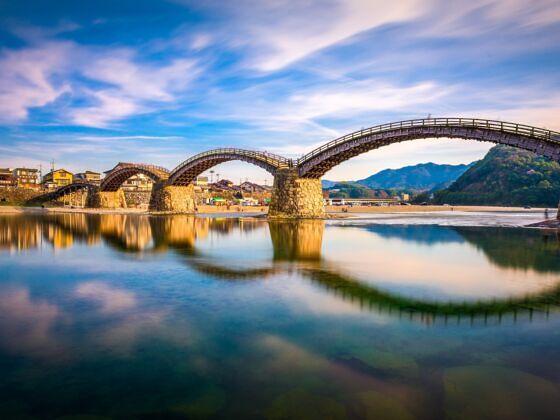

Yamaguchi Is the Best Prefecture for the Great Japanese Road Trip
At the ryokan’s lobby bar, Otani and I shared a bottle of Akkeshi, a peated whiskey from Hokkaido, while a Pantera soundtrack rumbled through the hinoki wood salon. Otani ordered a plate of fugu (pufferfish) sashimi and a round of IPAs from 365+1, a Yamaguchi craft brewery, to chase the whiskey. As I inwardly debated which was more dangerous — eating potentially lethal fugu or going round for round with Otani — it dawned on me that this man is a microcosm of Yamaguchi Prefecture itself: gentle and serene at first blush, but bubbling with mirth and a touch of chaos beneath the surface.

Photo: Yamaguchi Tourism
I visited Yamaguchi on my third trip to Japan, after visits to explore Tokyo, Kyoto, and Osaka left me eager for a taste of Japan’s countryside. I hail from Virginia, and a buddy in Tokyo made the case that Yamaguchi was the Old Dominion of Japan: the prefecture with the highest number of Japanese prime ministers, verdant rolling hills, and a healthy balance of rustic charm and urban sophistication. As a former history teacher, I was intrigued by Yamaguchi’s pivotal role in two watersheds in Japanese history: the rise of the Tokugawa Shogunate and the Meiji Restoration. My friend suggested renting a set of wheels in Yamaguchi City to see as much as possible of the prefecture, a land riddled with Medieval castle towns and framed by two seas.
A six-day road trip proved to indeed be the perfect introduction to Yamaguchi. Cutting through mountains and along the coasts of the Sea of Japan and the Seto Inland Sea, the route’s mountainside sake breweries, bustling fish markets, and kawara soba are as delightful as the views from the car window.
Day 1: Yamaguchi City
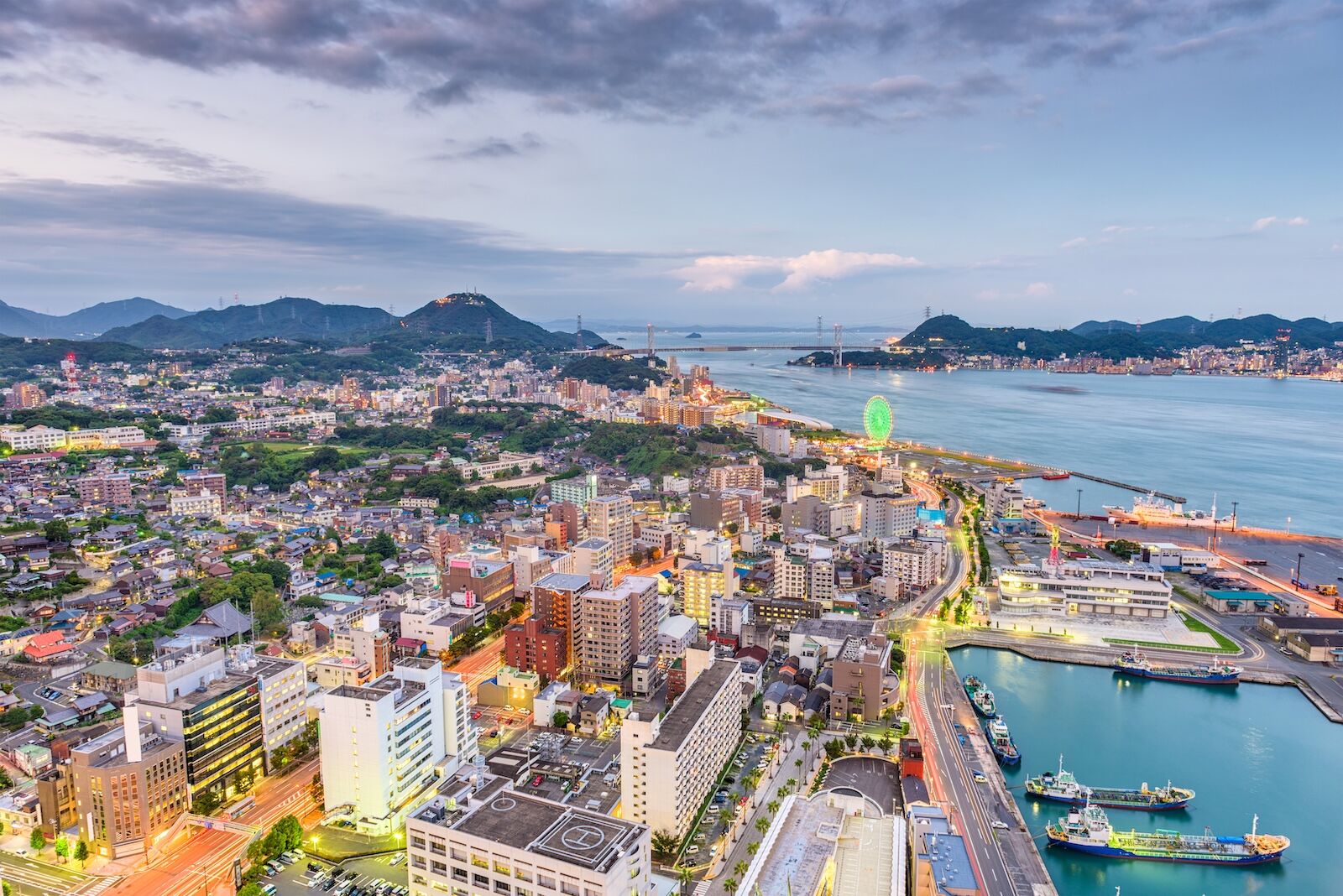
Photo: Sean Pavone/Shutterstock
Yamaguchi has excellent infrastructure — a byproduct of the many Japanese prime ministers born and raised in this prefecture. From Tokyo Station, catch the Shinkansen (bullet train) to Shin-Yamaguchi Station. The long ride is pleasant with a bento box, cold Sapparo, and views of villages and emerald-green rice paddies. Train tickets cost 20,000 yen (about $130). A trip to Yamaguchi can also be a nice addition if you plan to visit Hiroshima, only 38 min away by Shinkansen.
Yamaguchi City, the prefectural capital, is called the “Kyoto of the West” for its abundance of monasteries, temples, and Zen gardens. Explore geological wonders as ornate as a Gothic cathedral at Akiyoshido Caves, limestone caverns carved into the earth over millennia by trickling subterranean water. After spelunking, head to nearby Ohmine Shuzou, a boutique sake brewery where guests savor pours of crystalline rice nectar paired with patio views overlooking mountains and rice paddies. For an afternoon of serenity, stroll through the grounds of Jōei-ji, a Zen temple dating back to the Muromachi period (1336–1573). The gardens, designed by 15th-century calligraphy master and monk Sesshū Tōyō, are among Japan’s finest stone and sand masterpieces.
Almost as captivating are the 300-year-old gardens at Hotel Matsudaya, a charming inn in the Yuda Onsen district of Yamaguchi City. After a soothing onsen, sit by the gardens with a cup of tea as you contemplate the changing seasons and the ultimate impermanence of all existence.
Day 2: Hagi
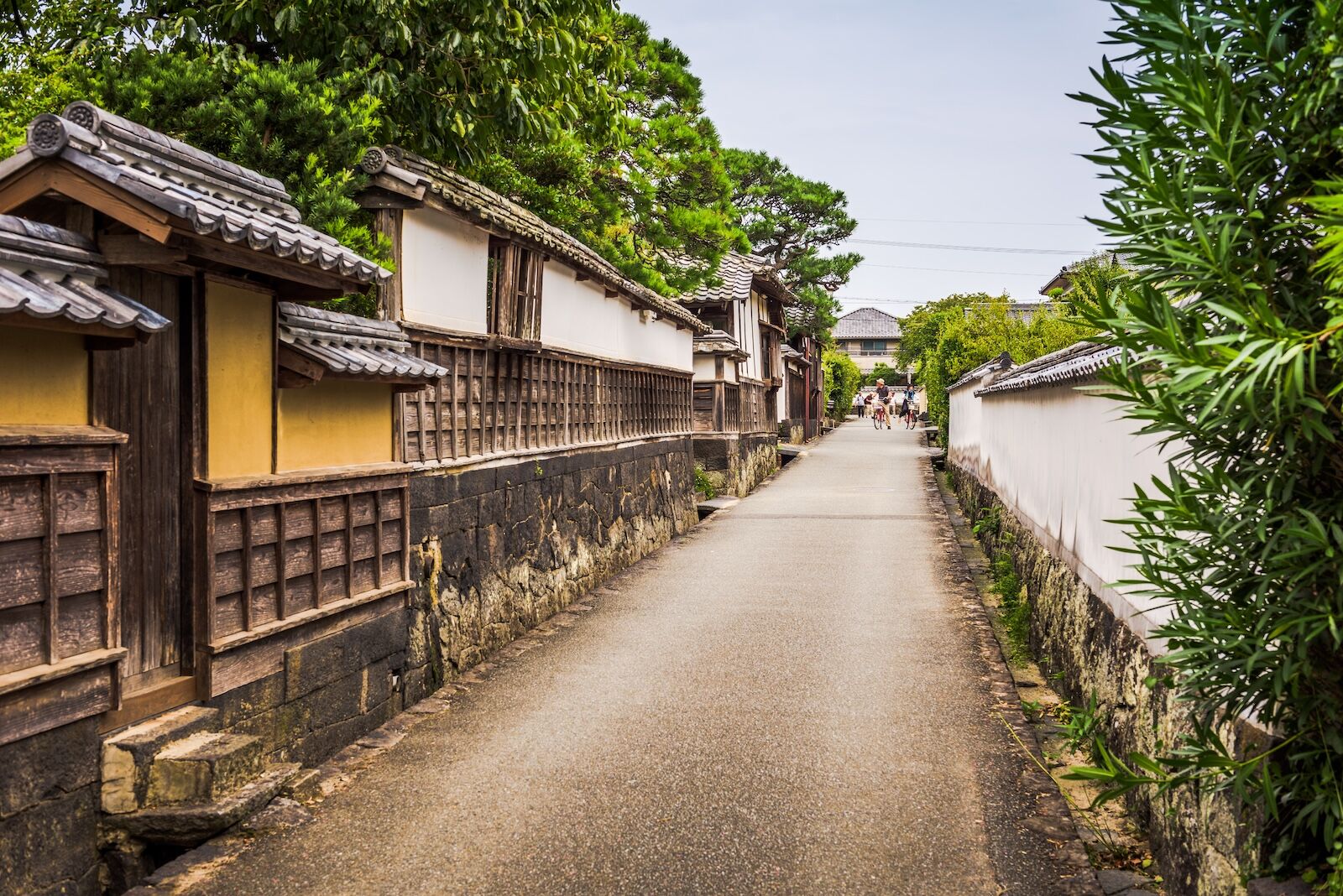
Photo: Sean Pavone/Shutterstock
Hagi, a historic port town on the Sea of Japan, may seem like a sleepy village today, but it once played an outsized role in two pivotal periods of Japanese history. In the 17th century, Hagi was a stronghold of the Mori clan, who vied with the Tokugawa for control of Japan. Although vanquished by the Tokugawa after a series of bloody battles, Hagi Castle remained a Mori bastion, and the town clung fiercely to samurai traditions even into the modern era. In the 19th century, Hagi avenged its defeat to the Tokugawa when the city became a revolutionary hotbed of the Meiji Restoration, a movement that dismantled the Shogunate and installed a pro-Western emperor over Japan.
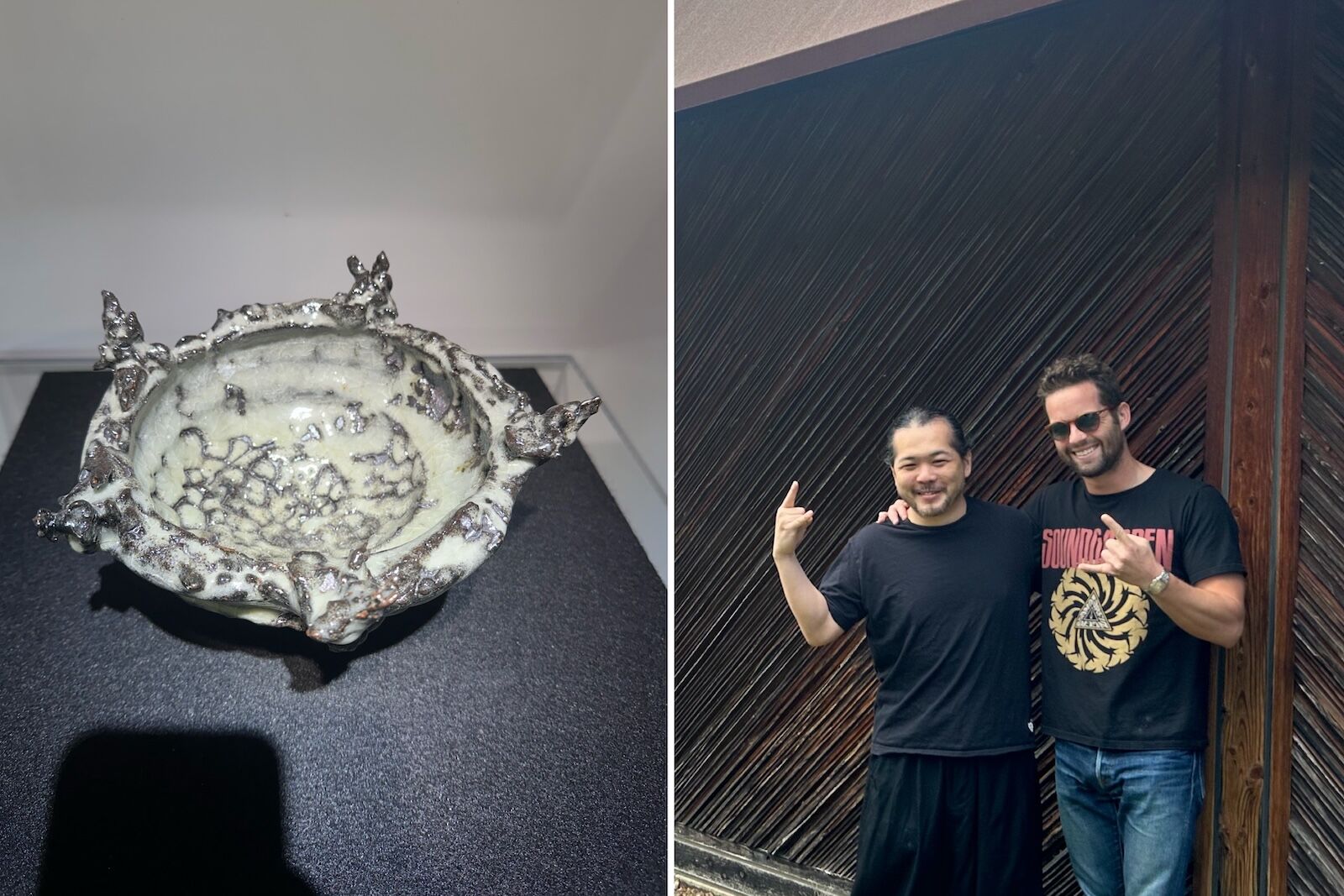
Taro Miwa (pictured with author) and his work. Photo: Johnny Motley
Hagi’s celebrated pottery, known as hagi-yaki, is recognized by UNESCO as part of Japan’s cultural heritage. Coated with thick white glaze reminiscent of vanilla frosting, Hagi stoneware is instantly recognizable. The finest tea cups and plates from Hagi command prices worthy of a Sotheby’s auction, and the artwork embodies the ideal of wabi-sabi: beauty in imperfection. Taro Miwa is the current patriarch of a long dynasty of Hagi ceramicists. As a young man, Miwa sojourned in California, and he credits the sublime vistas of Yosemite National Park as his greatest artistic inspiration.

Photo: Johnny Motley
Rent a bike to soak in Hagi’s handsome avenues, gardens, and old samurai residences. Bike rentals are available at Hagi’s tourist information office near Hagi Meirin Gakusha, an erstwhile school converted into a museum on Yamaguchi’s history. Before setting off on your ride, fuel up with a bento box of karaage (Japanese-style fried chicken) and a glass of local sake at Restaurant Hagi Goyomi, located inside Hagi Meirin Gakusha. After a day of cardiovascular and intellectual stimulation, recharge at Hagi Bettei, a boutique hotel in the heart of Hagi.
Day 3: Nagato

Photo: Johnny Motley
With a gentle river crisscrossed by footbridges, wooden buildings crowned with gleaming black tiles, and winding cobblestone alleyways, Nagato Yumoto Onsen looks like a Victorian painter’s fantasy of an idyllic Japanese village. Start your day with a coffee or matcha at one of Nagato’s many cozy cafes before rejuvenating body and soul at Onto Onsen, a 600-year-old geothermal bath on the banks of the Otozure River. Many onsens must heat or cool their water artificially, but Onto’s mineral-rich waters naturally bubble up from the earth at a delectable jacuzzi-like temperature.
Nagato is home to one of Yamaguchi’s most acclaimed pottery masters, Masahiro Sakakura, more widely known by his artistic nom-de-guerre, Shinbei. Visit the great artist’s studio to sip matcha from one of his cups, admire his ancient kiln, and marvel at the fire-hardened fruits of his muse.
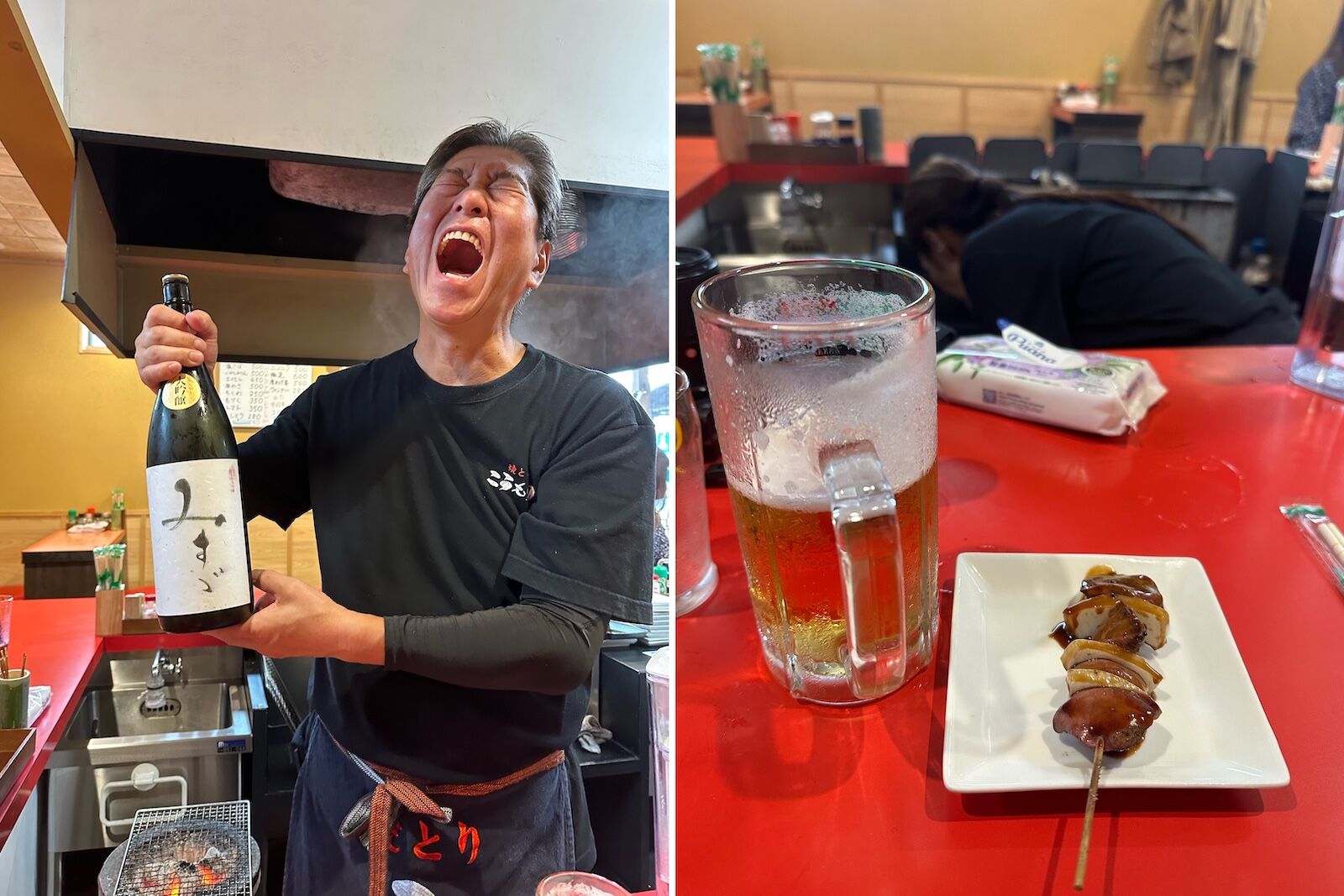
Photo: Johnny Motley
Chicken farming has long been a major industry in Yamaguchi, and Yamaguchi has some Japan’s finest yakitori, chicken morsels skewered on wooden sticks and charred to perfection over exceptionally hot charcoal. With its flowing beer taps, counterside service, and seductive whiffs of smoked meat, Yakitori Komori is like a Japanese take on a small-town barbecue joint in the Texas Hill Country. Wash down the succulent, smoky poultry with glasses of local sake or a beer from 365+1 Brewery, a craft brewery in Nagato Yumoto Onsen.
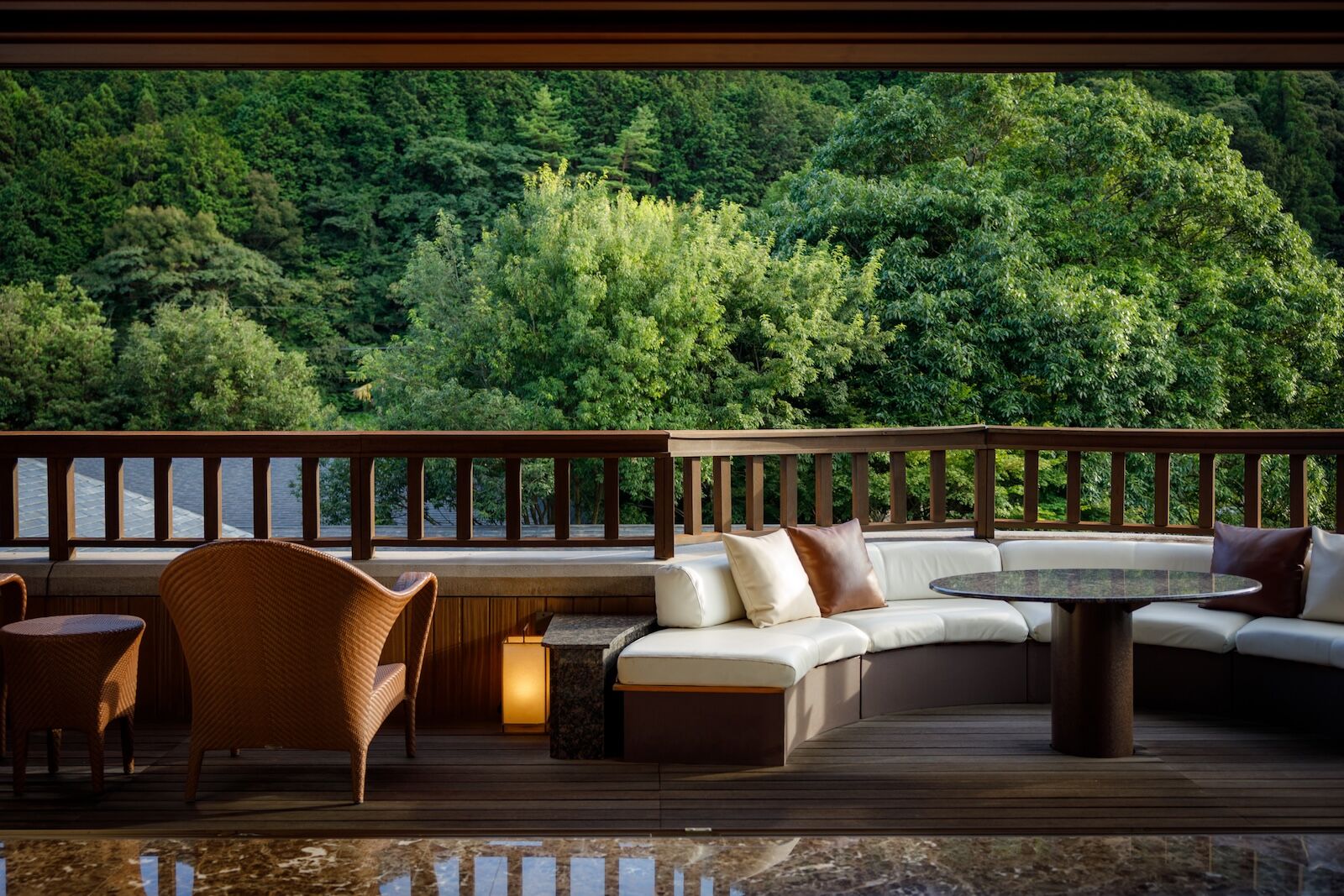
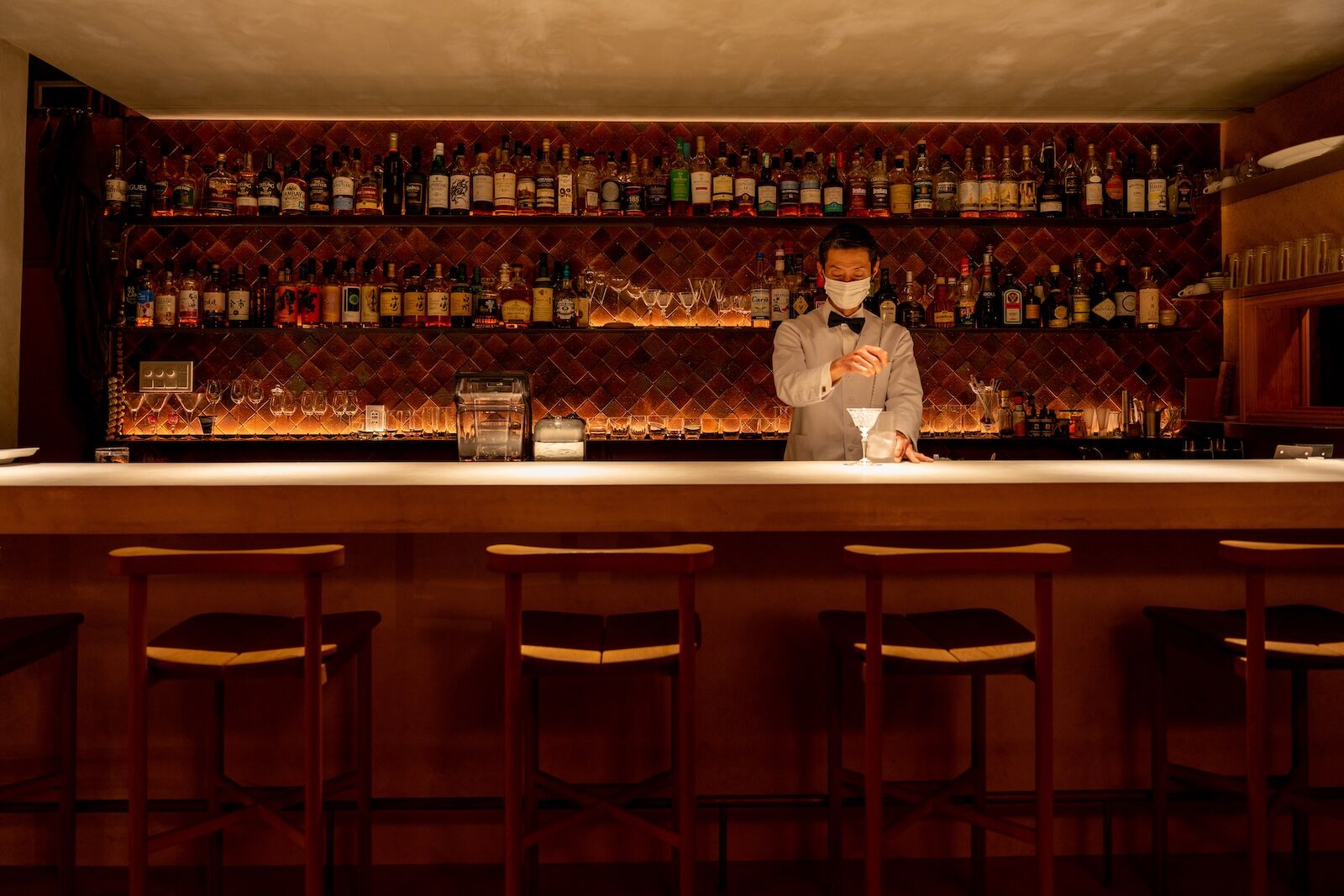
Bettei Otozure Ryokan blends the traditional charm of a ryokan with the luxury of a five-star western hotel. Rooms, adorned with artwork and polished wood, feature private outdoor onsens overlooking the forested mountains of Nagato. Bettei Otozure’s dining matches the opulence of the rooms, with Yamaguchi sake served in cups curated by the hotel’s owner, Otani. After dinner, grab a nightcap at THE BAR NAGATO, a treehouse bar across from the hotel with a commendable selection of rare Japanese whiskeys and local Nagato gin.
Day 4: Shimonoseki
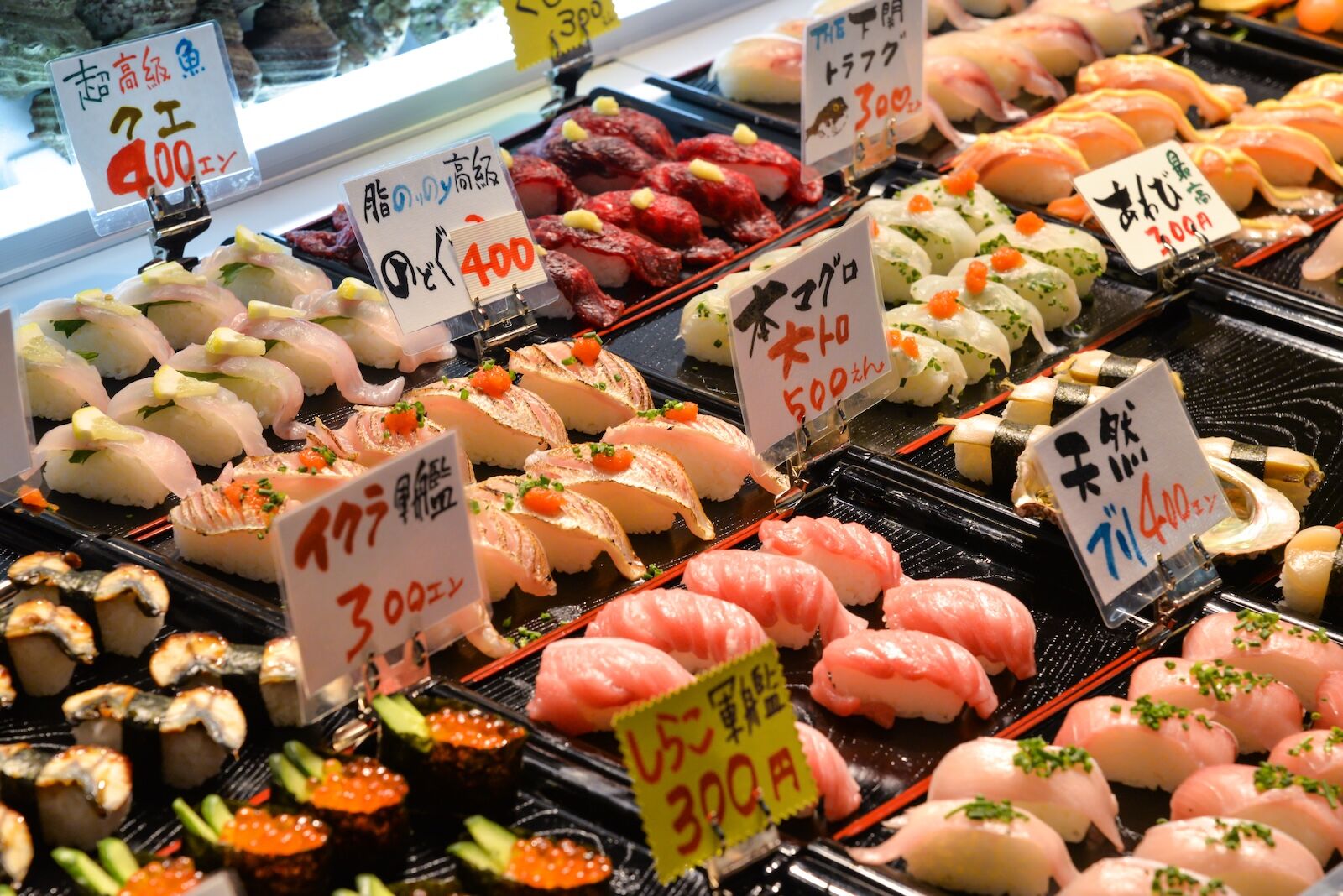
Photo: Niradj/Shutterstock
From the misty mountains of Nagato, head west to Yamaguchi’s westernmost tip and the town of Shimonoseki. My only wish for my next visit to Shimonoseki is that medical technology advances to the point where I can carry two stomachs. Regional delicacies like tempura pufferfish and kawara soba (thin noodles charred on a clay tile) will forever haunt my dreams. Shinonoseki also has a large Korean community, and bulgogi and kimchi are as ubiquitous as ramen and udon.
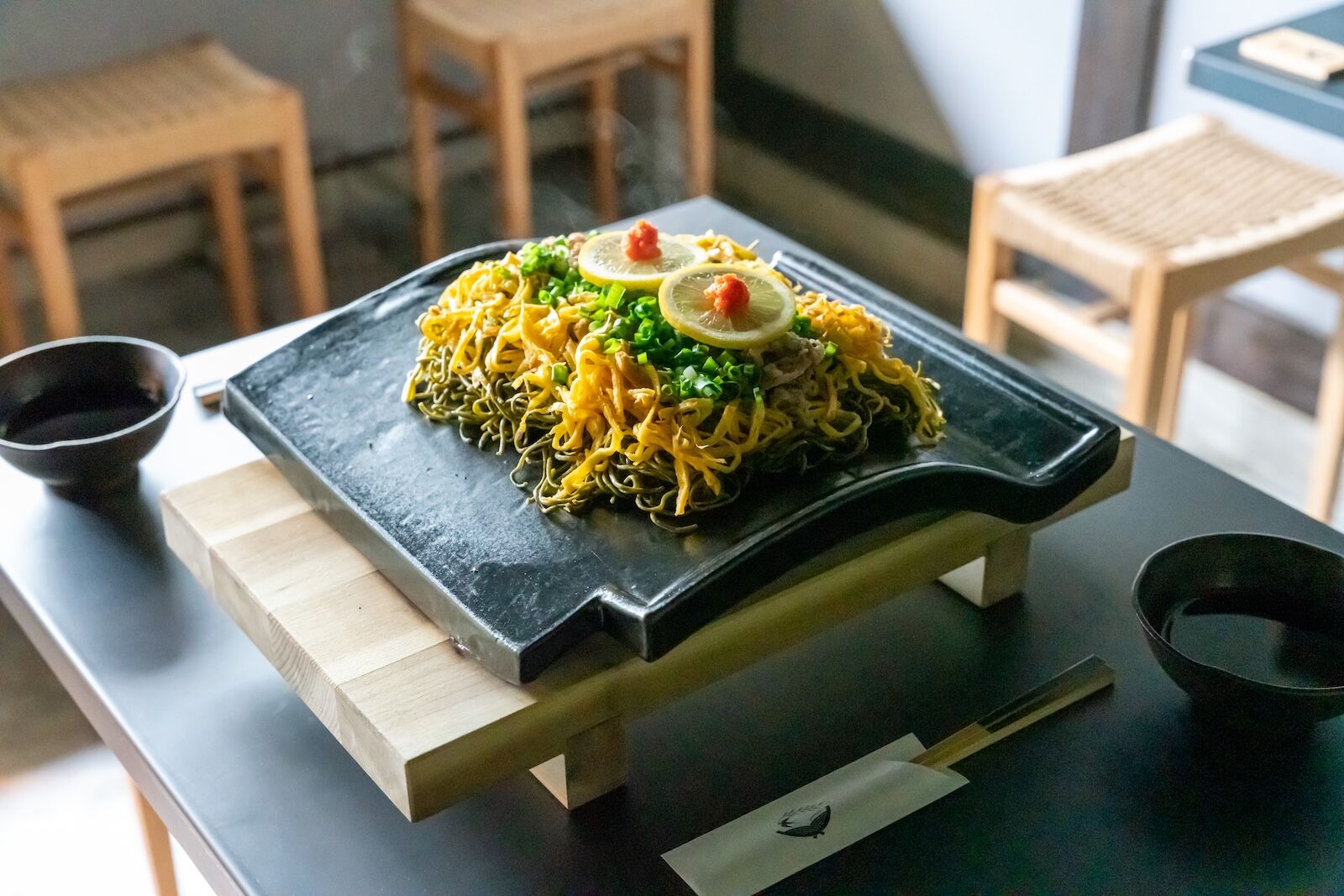
Photo: Yamaguchi Tourism
To properly prepare the metabolism for a visit to Karato Market, consider a 24-hour fast followed by a high-intensity workout. A colorful carnival of sushi, live fish, and food stalls, Karato Market makes even Tsukiji Market in Tokyo seem modest. If you’re feeling adventurous, try a plate of fugu, coastal Yamaguchi’s most iconic food. Pufferfish is lethal if improperly prepared, but cases of poisoning are extremely rare, and Japanese law requires cooks to obtain a license to prepare it.
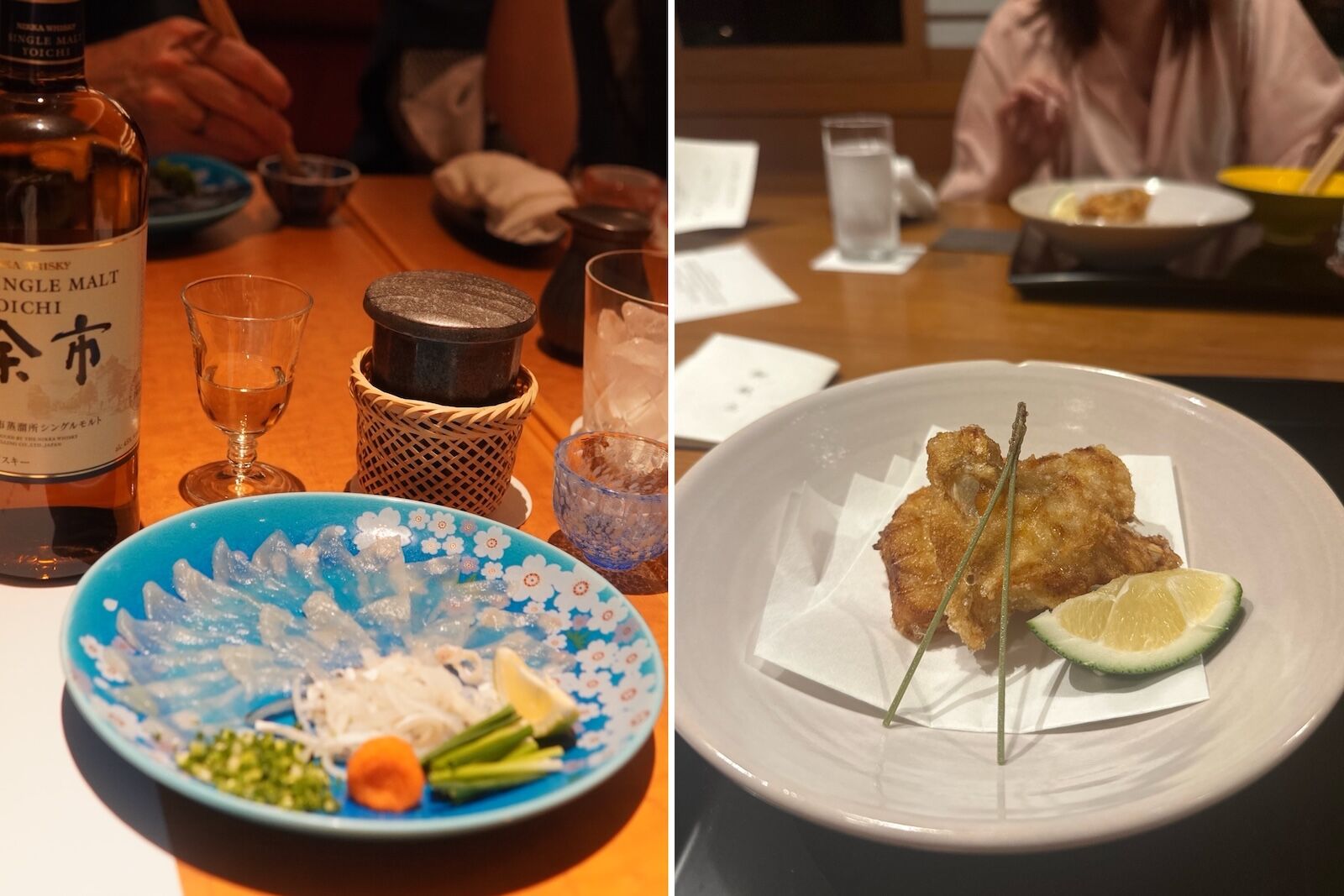
Photo: Johnny Motley
With a full stomach and joyful heart after a tour of Karato Market, wander up the oceanside promenade to Akama Shrine, a shrine dedicated to Antoku, a child emperor who drowned during a 12th-century sea battle. Overlooking the Kanmon Straits, the narrow passage of water separating the islands of Honshu and Kyushu, the hilltop shrine treats visitors to panoramic views of the ocean. When slumber beckons after a marathon of gobbling and swilling, unwind at Kaze no Umi, a hotel and onsen overlooking the sea.
Day 5: Yanai
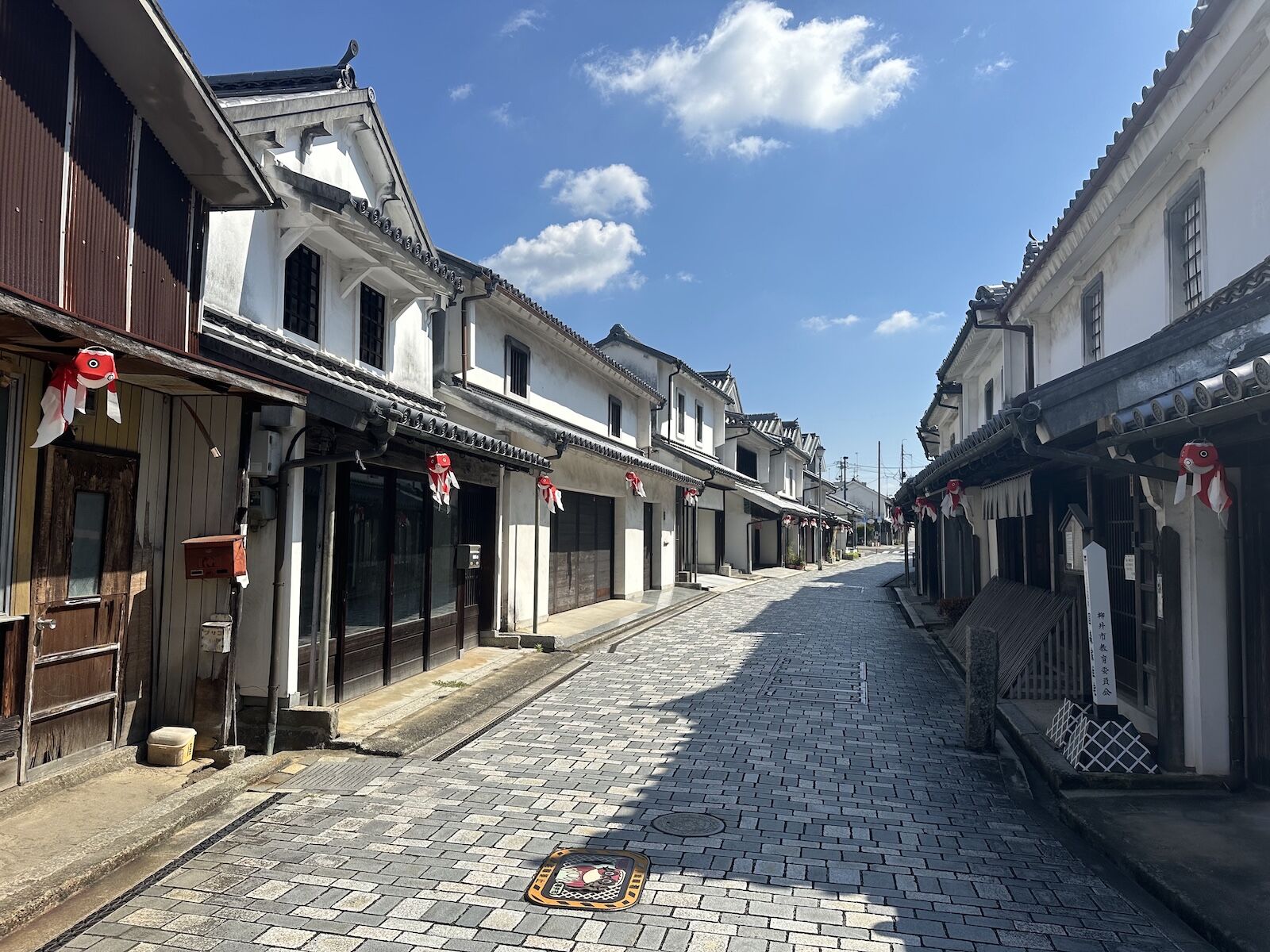
Photo: Johnny Motley
Drive east along the coast of the Seto Inland Sea to Yanai, a breezy seaside hamlet seemingly frozen in time from the 17th-century Edo Period. During the Tokugawa Shogunate, Yanai’s harbor bustled with sailors from Korea, Osaka, and Yokohama, and local merchants grew rich from maritime trade. The well-preserved machi-ya (merchant townhouses) lining Yanai’s streets harken back to past eras when Yanai was a fabulously wealthy entrepôt.
Yanai’s cobblestone streets and elegant architecture invite leisurely hours of wandering. As you admire the stately machi-ya, you’ll notice paper goldfish lanterns hanging above entrances. Goldfish have long been a symbol of Yanai, and visitors can make their own goldfish lanterns at Yanai Saizo.
If you’re willing to risk forever turning your taste buds against mass-produced soy sauces, stop in at Sagawa Soy Sauce Brewery. The master brewer at Sagawa, a family-owned business since 1830, treats shoyu production the way the head vintner at Château Mouton Rothschild approaches winemaking. Visitors can tour the hoary wooden fermentation vats before sampling gelato and confections infused with the silky, umami-laden ambrosia. An assortment of soy sauces are available for purchase, so cooks and gourmets are wise to save room in their suitcases.
Day 6: Iwakuni
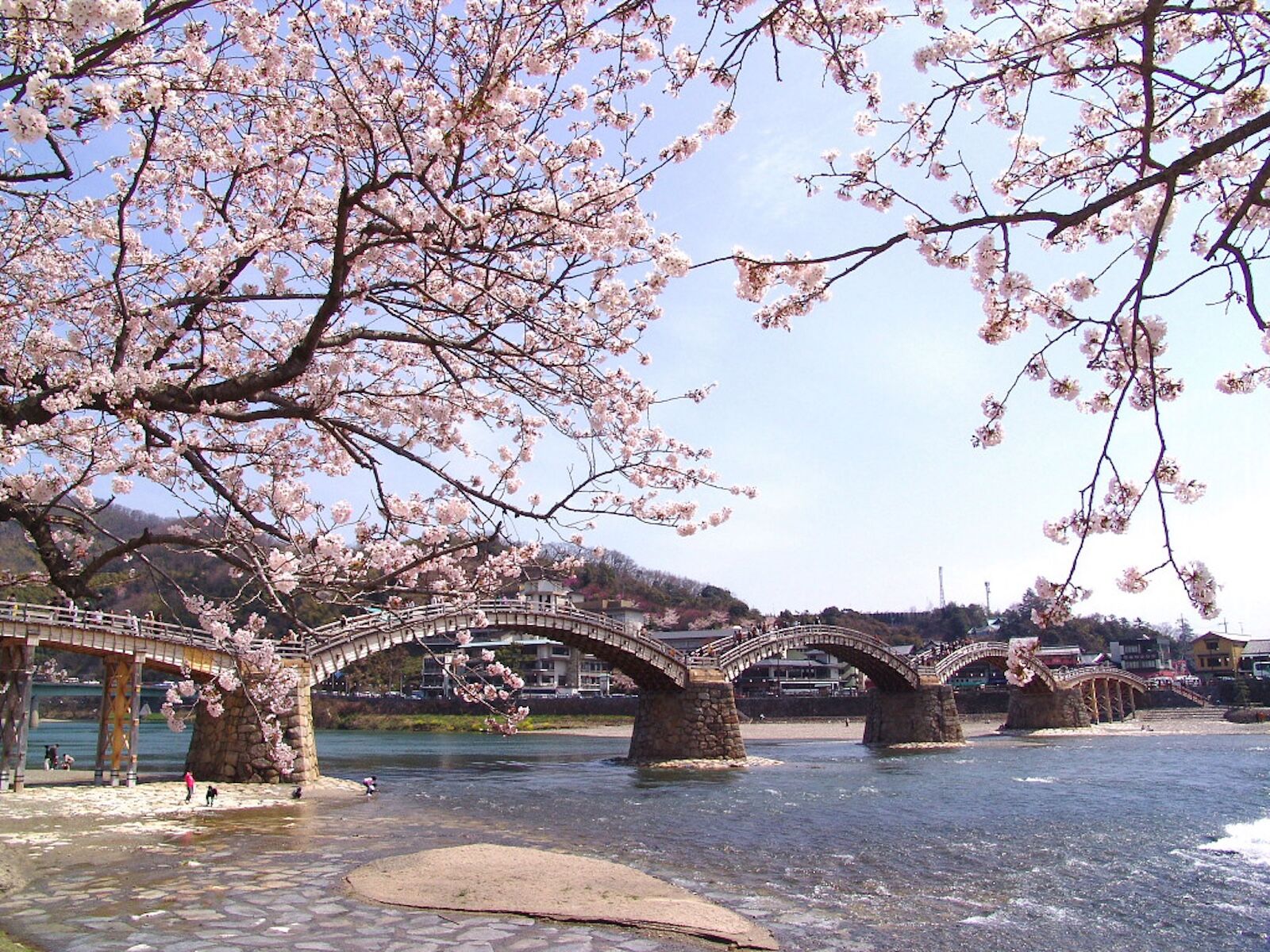
Photo: Yamaguchi Tourism
The charming town of Iwakuni is home to Yamaguchi’s most iconic postcard image: the Kintaikyo Bridge, an undulating wooden serpent spanning the Nishiki River. If you’re so inclined, crush a bottle or two of Dassai (an award-winning Yamaguchi sake) and then rent a traditional kimono from Orihime, a local clothing shop. Orihime offers a large selection of kimonos in various designs, sizes, and colors, and tailors are on hand to assist in properly tying the complex garment.
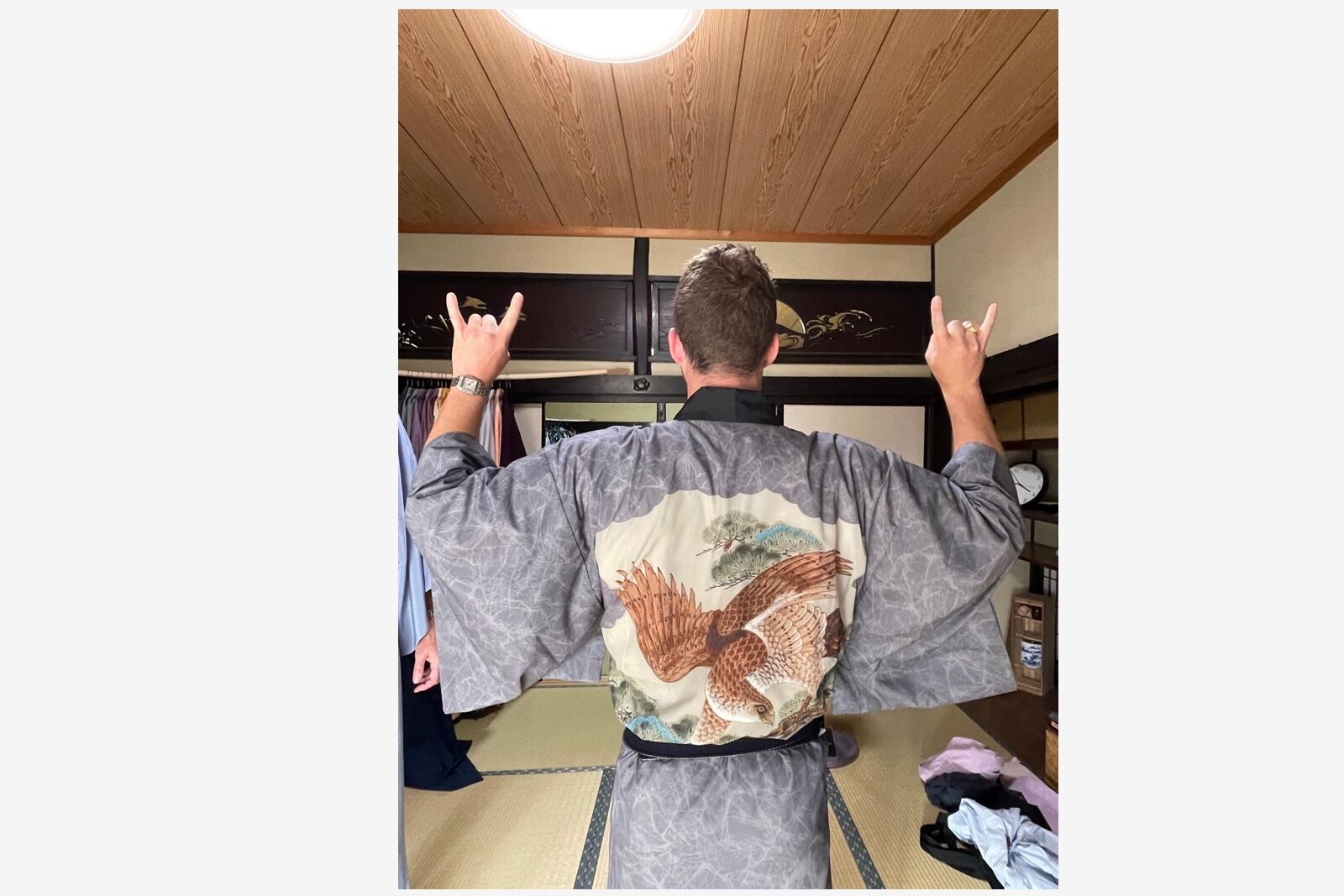
Photo: Johnny Motley
Kimono-clad, merry with sake, and feeling as grand as a shogun, stroll across the Kintaikyo Bridge to the parks and comely neighborhoods on the other side of the Nishiki River. Near the bridgehead, you’ll find an ice cream stand offering flavors that make Baskin Robbins seem like a nursing home cafeteria. Try the summer mikan icecream — the bright orange orbs, similar to a tangerine but sweeter, are emblematic of Yamaguchi.
Conclude your Yamaguchi road trip with a kaiseki dinner and a well-deserved soak in the onsens Iwakuni International Kanko Hotel. The hot baths, using medicinal water pumped from deep in the ground, overlook the Nikishi River, and at night the stars over Kintaikyo Bridge are vivid enough to inspire impromptu haiku verses.
Onward from Yamaguchi
For those keen to continue traveling after road-tripping through Yamaguchi, the prefecture is a convenient launching point to Korea and Kyushu, the island south of Honshu. From Shimonoseki, the yatai stalls and gastronomic splendor of Fukuoka, Kyushu’s largest city, are only an hour’s drive away. Multiple ferry services from the port of Shimonoseki offer trips to Busan, Korea, a city within easy reach of Seoul.